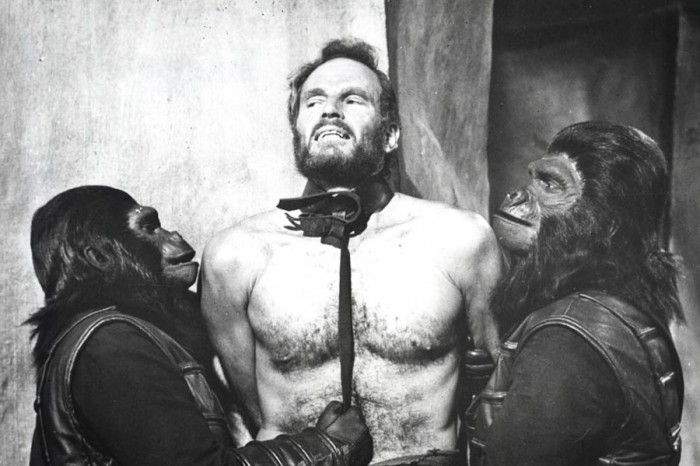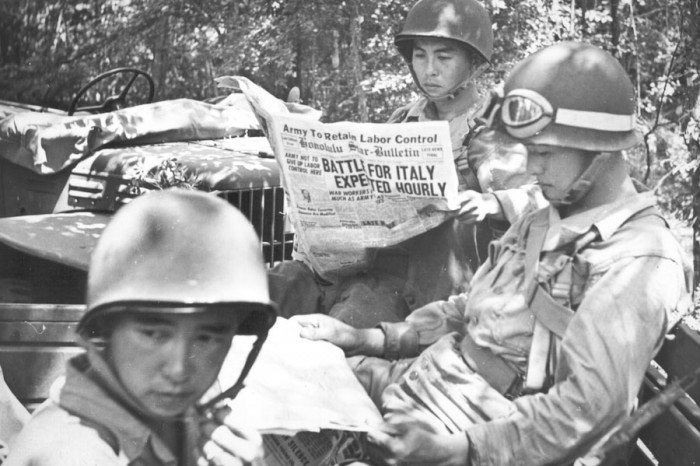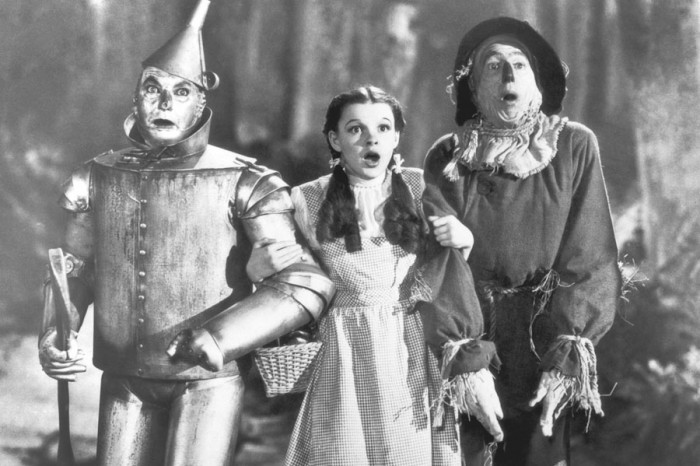Late last year, after 10 years of working and traveling abroad, I welcomed repatriation — particularly to the West Coast. Having heard much of the West’s progressive cultural climate, I expected to be pleased with a decade’s worth of American multiculturalist progress, especially among Seattle’s relatively large Asian population.
I had trod a long and jaundiced road growing up Asian amid the palpable European disposition of East Coast suburbia. So, looking forward to my first experience living on the left coast, I touched the Emerald City’s ground with a quiet, cautious hope.
As a new resident of Washington, I needed a driver’s license.
“I have an expired Maryland license,” I explained to the DOL counter worker, whose face took on a sudden eagerness, “and a valid Korean license.”
She bristled and sniped, “Oh, sneaky.”
Sneaky? She undoubtedly was about to drop the fact that an expired license would require me to take the tests. But a valid Korean license could simply transfer over to a local one. Yes, I had sneakily acquired a Korean license for just such an encounter. I knew that, if I kept my foreign license current, one day it would prove instrumental in my designs for wealth, white women, and civil-servant vexation.
I said nothing, and she continued: “I’ll have to fax a copy of the license from your country and get it translated.”
“Actually, America is my country,” I said flatly.
She paused a moment to absorb my declaration. “When we verify that it’s valid in your country, we can get you started,” she countered.
Her kung fu was deft and direct. Apparently, she was daring me to give her reason to discover a problem with the fax or to dispatch some such flying monkey wrench. She had measured the moment with exquisite precision.
This nondescript municipal building conferred upon this woman some modicum of power, and evidently she had dedicated herself over the years to pressing every scintilla of delight out of her station. I dared not retaliate at this delicate juncture. Getting that license was more important than dousing the Wicked Witch. Again, I held my tongue as she prepared my application, apparently satisfied in her small victory: an oblique but unmistakable injunction to go back to my country.
It was more passive than aggressive, usually. No one was spitting epithets at me exactly, but something was always just a little off. It had the feeling of a soviet-era simulacrum of an American town constructed to train Russian spies. The lawns were impeccably groomed. Most people were polite. By and large, they said the right things, and their shoes matched.
But that weird tension persisted, often manifesting most plainly after they realized that my lips would not issue the Asian accent that they may have anticipated.
Over and over, I encountered this muted bipolarity between hostility and hospitality in countless interactions with whites in my suburb. Either they seemed somehow grumpy with the fact of my existence or they made overly courteous gestures such as moving widely aside and holding the door for me. Always just a tad too much. Never a casual upward nod of the head and a “Go ahead, man,” it was instead a stilted “Please, you first, sir,” as if the Great Wizard were watching.
Then I noticed something else. Virtually all the civil servants, big-box cashiers, and fast-food workers in my suburban confines were white. I had visited communities like this before. But most of them were ensconced in farmland and pastures, their roads choked with American-make pickups. These informal indices, jobs and cars, can reveal a great deal about a town: racial composition, class dynamic, general income, political leanings, etc.

But this coquettish Seattle suburb was sending me mixed signals. The prevalence of Japanese, Korean, and German cars indicated that the residents were receptive to science and had no more than one banjo per household.
But entry-level service positions are occupied by the underclass, and, even in the exurbs of large cities, that often means blacks and Latinos. Where were they, and how did all the Asians I had heard of fit into this picture?
Among the 15 most populous metropolitan statistical areas, Seattle is the only one in which Asians clearly represent the minority element with no other significant nonwhite confederate to help tip the racial balance. Asians compose the second largest group in Seattle, and no other ethnic group comes close to standing as buffer between Asians and the preponderous white population.
Seattle is indeed one of the whitest populous urban centers in America with a 72 percent white majority, second to Boston’s 79 percent. Seattle also has one of the highest proportions of Asian residents at 12 percent.
With limited black and Latino populations, Seattle is in essence a racial dyad, in which a burgeoning minority is challenging a statistically and culturally entrenched majority for finite resources. In the Emerald City, Asians lead the attack — perceived or real — on one of the last urban bastions of white preeminence in America.
The onslaught is taking place not only on the population front but also with wealth attainment. In Washington state, the median household income of Asians outstrips those of all other racial groups at $67,000, about $10,000 more than the white median. Nationally, the income disparity is even greater, with Asians earning more than all other groups and $14,000 more than whites.
The income gap is largely explained by educational attainment. Asians have the highest proportion of college graduates of any racial group. Nearly half of Asians age 25 or older hold a bachelor’s degree or better, compared to less than a third of whites in the same age category. Walking through a student union on a Washington campus, one might mistake it for Narita International Airport.
One might even mistake it for America three decades from now. By 2043, the aggregate “minority” population is projected to become the numerical majority of the national population. Already, 22 of the 100 largest cities have combined minority populations outnumbering whites. In 2000, white Americans constituted the absolute majority in all but 13 of the largest cities. Asians now are the fastest growing group in both Seattle and the country as a whole. From 1995 to 2050, the national Asian population is expected to grow by 269.1 percent, while the white population is projected at only 7.4 percent growth.
Oh. That must be why the Wicked Witch was so surly. Could it be that driver’s license lady had grown weary of forcing an agreeable countenance for people like me come to put her out? Her position affords her a front-row-center view on the demographic convulsion ripping through suburban Seattle. Before her eyes, the complexion of her Emerald City is changing due to minority displacement from the gentrifying urban core and the influx of Asian immigrants, mostly Chinese and Filipinos and Vietnamese – oh my.
Population trends have already rendered conventional uses of the terms “minority” and “majority” all but obsolete elsewhere in America and portend as much even here amid metro Seattle’s predominant white population. But with a 70 percent white majority, multiculturalism is still a nascent and unnerving matter in Seattle. In comparison, New York City has not had a 70 percent white population since the 1960s. Montgomery, Alabama, the Cradle of the Confederacy, has not been as white as Seattle since 1850.
But in Seattle, those who bear the standard of change would be perceived not as a shiftless, criminal underclass but as a model-minority elite. All the weird looks, backhanded grumblings, and bizarre deference are the natural nativist reactions to the coalescence of an American apartheid, in which the white majority takes drive-through orders, rings up merchandise, and toils in licensing offices. On some level of consciousness, the Seattle majority nurses a horrifying vision of a Planet of the Apes end game: the detritus of decent civilization strewn about a vast slough, the point of the Space Needle jutting up from a desperate shoreline, and the obscene inversion of a land governed by monkeys that can speak – without an accent.
The Emerald City’s porous walls have allowed a dreaded and painful transformation to ensue, and many of its citizens now panic in whispers.

Watching war movies as a kid, I imagined tearing through enemy lines brandishing a Thompson submachine gun, its unyielding rectilinear design as solid and true as men standing in perfect rank and file. The aw-shucks olive, workaday cut of World War II army fatigues and steel-pot helmets impressed me as humble and honest. Those films demonstrated for me the virtues of courage and honor, and, in my imagination, I wore that helmet and those fatigues, someday to be given a chance to prove my virtue.
When I became an adult, however, I was disappointed to learn that those films were not meant for me. Even 10 years after I departed a nation abuzz with multiculturalist rhetoric, I find that I am behind enemy lines, in the eyes of some. When many Americans look upon me, I wear black pajamas and a conical straw hat. Or they perceive an impossible Übermensch. They seem unable or unwilling to recognize the man who used to be that kid.
As an adult, I learned also that courage and honor are not so common among men as those old movies would indicate. I have been met in Seattle with fear and false smiles. It took me a while to realize that this is the way people greet trespassers. It would seem that Seattle, in some quiet opinions, was not meant for me either.
There is no Great Wizard here who makes all things better. Steered by lore, I traversed the Pacific to the Emerald City hoping to find at last a people who had cracked that dirty old Brazil nut of tribalist rivalry and anxiety. Instead, I discovered an apartheid populace writhing in its own neuroses about race and class.
The Seattle metropolitan area, one of the last great white population centers, is projected to turn majority nonwhite by 2050. Our species has spent the last quarter million years squabbling and in flight from ourselves. Having stitched together ever more flags of mutual intolerance, the great human diaspora ends here. In the New World, we all convene again, and there is nowhere else to run. By 2050, virtually every corner of America will be multiracial.
In the absence of a sorcerer to bequeath multicultural unanimity unto us, we are compelled to cultivate for ourselves the brains, hearts, and courage to make a home of our country.
This story has been updated since its original publication.



I lived in Seattle, the actual city from 1986 through 2006 upon which time I moved to Sweden. I read your article and thought, “Hmm. for someone who has by self proclamation traveled the world for a decade,” you have come to Seattle, with a paucity of global wisdom while you have extrapolated far too much about metropolitan “Seattle” from your viewpost in redneck Mill Creek. Your writing simultaneously retches of pretentiousness and being victimized– pointing at your own perceived communication and non-verbal communication challenges from your observations in Mill Creek. It is like observing caged Lions at the San Diego zoo and making extrapolative statements about projected population growth of Tigers in Bengali. Unfounded and inaccurate. I expected more of an insight. Maybe you should consider interpretive dance instead of writing. There is a stage somewhere in the Ethnic Cultural Theater in Seattle’s International District that I am sure will accommodate (read pity) you. I was neither inspired by your simultaneous Model Minority reportage/self reference and your ability to be both victim and vigilante. If you have nothing constructive or new to add to the discussion, perhaps you should leave that job to the vibrant generation of activist that actually have something to say. I have already wasted two minutes of my life responding to your insipid observations.
Let me first say, welcome! I’ve lived in seattle six years now and have come to love this place as home and I hope one day you can say the same. I don’t know how mill creek is (i live in seattle) but I’ve found this place one of the best places to be asian; it’s not perfect, but i’ve felt that the whole pacific northwest is pretty accepting to all (this is from me, coming from the chicago-area).
To call this “apartheid” seems a bit extreme. Fear and false smiles? You may just be encountering the seattle freeze, not some secret war among whites-asians (unless you’re talking about the dating world, because then, it’s on). Granted, the older generations are not as political correctness or culturally aware, but i urge you to keep in mind the perspective of all sides, and consider this as cause for education, not figurative race war. Just because some DOL clerk wasn’t sensitive to your condition doesn’t mean she was malicious, ignorant maybe, but so are many people on both sides of the pacific. asia is still pretty outright racist in ways that are worse.
i like your multicultural hurrah at the end. help make it happen, don’t run from the problem.
btw points on data: the san francisco bay area is actually a more significant mecca of asian americans (also as you said the #2 demographic) and seattle isn’t even in the top 12 “statistical metropolitan areas” by population (it’s #15).
Skyrien, thank you for pointing out these discrepancies. Seattle is indeed the 15th largest MSA, so we have corrected that number. We have also added additional information to clarify the comparison being made to populations in other large cities.
I live in the Seattle Colman neighborhood, aka the Central Area, formerly aka Garlic Gulch or the northern border of the Rainier Valley. We actually thought about buying a place in Mill Creek several years back and are also considering moving to the ‘burbs as our children are getting older. However, I grew up in Glenview, IL, a suburb of Chicago, next to “Ferris Bueller’s suburb” and I can’t fathom trying to move to the ‘burbs where I feel that it is socio-economically homogeneous. My children are mixed race and I also believe that there is something special where we live in Seattle. We live between 2 high schools, Garfield and Franklin, who have the most wide ranging alums who have excelled extremely well in their respective fields. Jimi Hendrix, Ron Santo, Kenny G., Gary Locke, Quincy Jones are the more well known ones. Also, in 1961 Martin Luther King, Jr. spoke at Garfield High School, and told the students, “You are a beautiful student body,” who erupted in cheers.
Seattle is home to me now after living in Chicago, Brazil, Florida and having traveled over the world for work and pleasure. Oh and by the way my mail person (female), dry cleaner and local convenient store owner are all Korean.
If you’re suggesting Seattle’s vast white population, which is by and large more than friendly to minorities of all stripes is apartheid, then you’re giving a metaphorical slap in the face to those who actually suffered under such a system in reality. No offense, and I bet you mean well, but let’s get a little perspective before we cry foul. I realized it’s hip to keep digging deeper and deeper to find racial issues to complain about. Sorry kids, it’s not 1964 and you don’t get to be at the forefront of the Civil Rights movement.